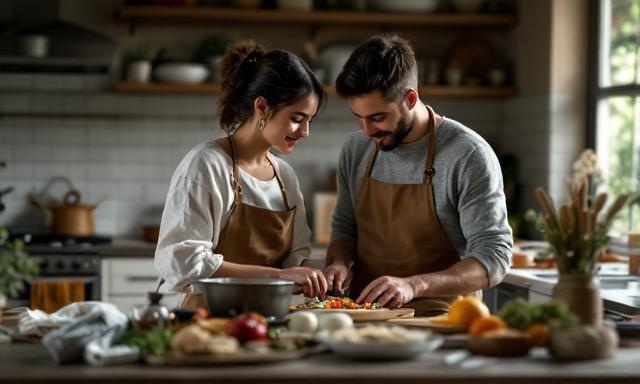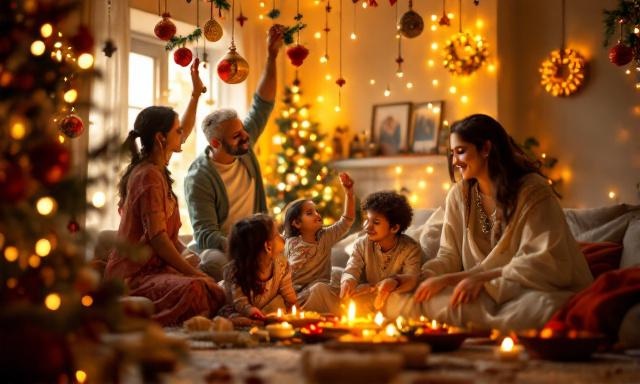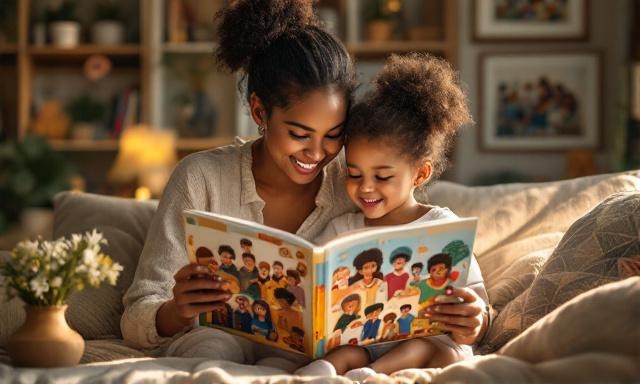
Unity in Diversity
Strengthening Bonds in Multicultural Relationships
The Beautiful Tapestry of Love Across Cultures

My husband and I have experienced firsthand how our different cultural
backgrounds have added incredible depth to our family life. Our children are
growing up surrounded by rich stories, unique celebrations, and diverse
perspectives that shape their understanding of the world. Every day brings new
opportunities to share and learn from each other's heritage, making our home a
vibrant place filled with meaningful traditions and shared experiences.
Over the years, I've encountered many assumptions about multicultural
relationships that simply don't hold true. People often worry about
communication barriers or family conflicts, but I've found that these challenges
actually bring couples closer together when approached with love and
understanding. Strong relationships are built on mutual respect and commitment,
regardless of cultural differences, and these differences often become the very
foundation of a deeper connection.
One of the most beautiful aspects of our multicultural marriage has been
discovering and embracing new traditions together. During our first year of
marriage, we started combining elements from both our cultural celebrations,
creating something uniquely ours. Now our children eagerly anticipate these
special moments, from traditional holiday meals to annual customs that blend
both our backgrounds. These shared experiences have become treasured family
memories that we'll pass down through generations.
Communication is Key
Communication in our multicultural relationship goes beyond just words. We've
learned to recognize and appreciate different cultural approaches to expressing
thoughts and feelings. My husband's culture values indirect communication and
subtle gestures, while I grew up in a more direct environment. Understanding
these differences has helped us develop a deeper appreciation for each other's
ways of expressing love and concern.
Language differences in our home have led to countless moments of laughter and
learning. We often find ourselves teaching each other new words and phrases,
turning potential barriers into opportunities for connection. Our children have
become little language experts, naturally switching between languages and
helping us bridge any communication gaps with their innocent charm and natural
ability to adapt.
The cornerstone of our strong relationship has been our commitment to truly
listening to each other. We make time each day to share our thoughts and
experiences, being mindful of cultural nuances in how we express ourselves. This
open dialogue has created a safe space where we can discuss anything, from daily
challenges to deeper cultural misunderstandings, always approaching
conversations with respect and genuine curiosity.
Celebrating Special Moments Together

Holiday seasons in our home are vibrant celebrations that honor both our
cultural heritages. We've found joy in combining traditional festivities,
creating a calendar full of meaningful celebrations throughout the year. These
blended holidays allow our children to experience the best of both worlds while
understanding the significance behind each tradition.
Together, we've developed unique family customs that reflect our shared values
while respecting our individual backgrounds. From weekly family dinners
featuring fusion cuisine to annual ceremonies that combine elements from both
cultures, these new traditions have become the heartbeat of our family life.
They give our children a sense of belonging and help them understand their
unique cultural identity.
Our extended family plays a crucial role in passing down cultural heritage to
our children. We regularly invite grandparents, aunts, and uncles to share
stories, prepare traditional meals, and participate in celebrations. Their
involvement helps our children form strong connections with their roots and
understand the importance of family bonds across cultures.
Raising children with mixed heritage comes with the wonderful responsibility of
helping them embrace their unique identity. We actively encourage our children
to learn about both sides of their cultural background, sharing stories,
language, and traditions from each heritage. This approach has helped them
develop confidence in who they are and pride in their diverse background.
Managing Family Expectations
Different cultures often have varying expectations about family roles and
responsibilities. In our marriage, we've learned to find a balance that honors
both our traditional values while creating a harmonious household. Through open
discussion and mutual respect, we've established family roles that work for us
while maintaining the core values from both our backgrounds.
When it comes to raising our children, we've encountered different cultural
approaches to parenting. Rather than seeing these differences as obstacles,
we've thoughtfully combined the best aspects of both parenting styles. This has
resulted in a balanced approach that emphasizes strong family values, respect
for elders, and individual responsibility.
Supporting each other through cultural adjustments has strengthened our bond as
a couple. Whether it's helping my husband navigate holiday expectations with my
family or him teaching me the proper etiquette for traditional ceremonies in his
culture, we approach each situation with patience and understanding. This mutual
support has created a foundation of trust and respect that continues to grow
stronger.
Growing Stronger Through Differences

Our cultural differences have become one of the greatest strengths in our
relationship. These variations in perspective and tradition have taught us
patience, understanding, and the importance of compromise. Through working
together to bridge cultural gaps, we've developed a deeper appreciation for each
other and built a stronger, more resilient partnership.
Living with someone from a different cultural background has opened my eyes to
new ways of viewing the world. My husband's unique perspective often helps me
see situations from angles I hadn't considered before. This diversity of thought
has enriched our decision-making process and helped us find creative solutions
to challenges we face as a family.
As parents, we believe the best way to teach our children about diversity is
through our daily actions and attitudes. When they see us embracing and
celebrating our different backgrounds, they naturally learn to value diversity
in their own lives. Our multicultural household has become a living classroom
where our children learn acceptance, respect, and appreciation for different
cultures through real-life experiences.
